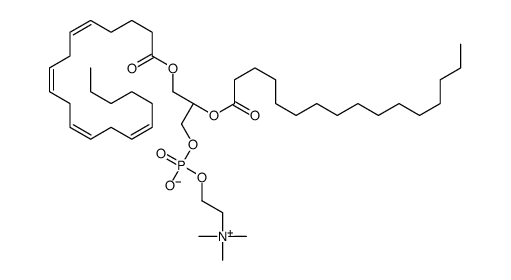Peptidoglycan enhances secretion of monocyte chemoattractants via multiple signaling pathways.
Sae-A Lee, Sun-Mi Kim, Yong-Hae Son, Chung Won Lee, Sung Woon Chung, Seong-Kug Eo, Byung-Yong Rhim, Koanhoi Kim
Index: Biochem. Biophys. Res. Commun. 408(1) , 132-8, (2011)
Full Text: HTML
Abstract
Peptidoglycan (PG) is detected in a high proportion in inflammatory cell-rich regions of human atheromatous plaques. In the present study, we determined the cellular factors involved in PG-mediated chemokine expression in mononuclear cells in order to understand the molecular mechanisms of inflammatory responses to bacterial pathogen-associated molecular patterns in the diseased artery. Exposure of human monocytic leukemia THP-1 cells to PG resulted in not only enhanced secretion of CCL2 and CCL4 but also profound induction of their gene transcripts, which were abrogated by oxidized 1-palmitoyl-2-arachidonosyl-sn-phosphatidylcholine, an inhibitor of Toll-like receptors (TLRs)-2/4, but not by polymyxin B. PG enhanced phosphorylation of Akt and mitogen-activated protein kinases and activated protein kinase C. Pharmacological inhibitors such as SB202190, SP6001250, U0126, Akt inhibitor IV, rapamycin, and RO318220 significantly attenuated PG-mediated up-regulation of CCL2 and CCL4. We propose that PG contributes to vascular inflammation in atherosclerotic plaques by upregulating expression of mononuclear cell chemoattractants via TLR-2, protein kinase C, Akt, mTOR, and mitogen-activated protein kinases.Copyright © 2011 Elsevier Inc. All rights reserved.
Related Compounds
| Structure | Name/CAS No. | Molecular Formula | Articles |
|---|---|---|---|
 |
1-Palmitoyl-2-Arachidonoyl-sn-glycero-3-PC
CAS:35418-58-7 |
C44H80NO8P |
|
Miscibility of Sphingomyelins and Phosphatidylcholines in Un...
2015-11-03 [Biophys. J. 109 , 1907-16, (2015)] |
|
CTP:phosphocholine cytidylyltransferase activation by oxidiz...
1999-11-23 [Biochemistry 38(47) , 15606-14, (1999)] |
|
Characterization of hormonally regulated and particulate-ass...
1993-06-05 [J. Biol. Chem. 268(16) , 11697-702, (1993)] |
|
Preparation and characterization of 8a-(phosphatidylcholine-...
1998-07-01 [Biosci. Biotechnol. Biochem. 62(7) , 1293-300, (1998)] |
|
Transfer of very low density lipoprotein-associated phosphol...
2006-02-01 [J. Lipid Res. 47(2) , 341-8, (2006)] |